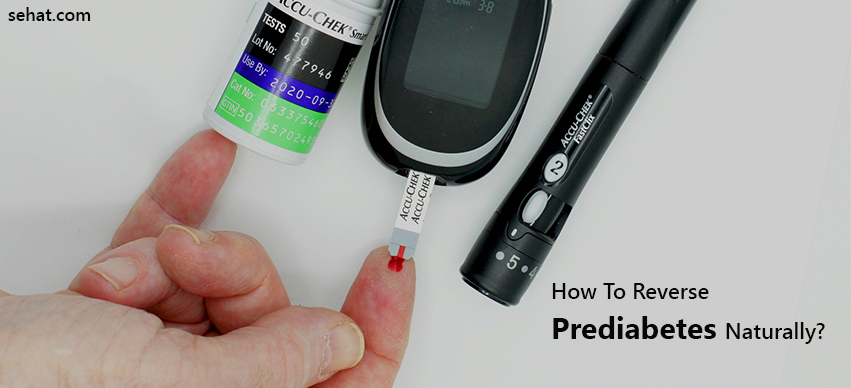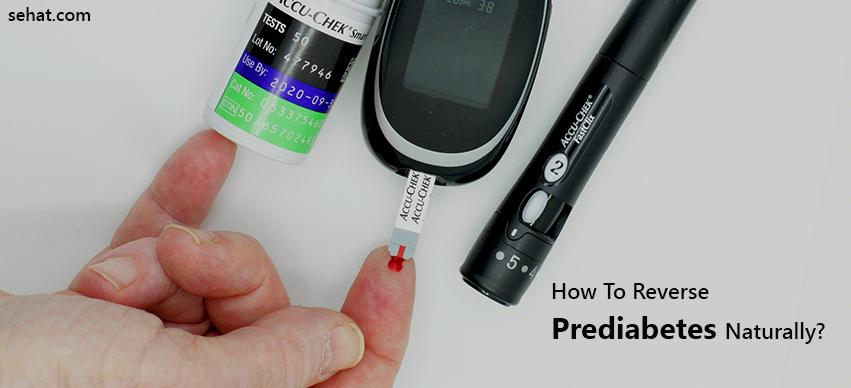Evolution of Prescription Refills: From In-Person to Online ..
6 Min Read


Prediabetes is a condition where blood sugar (glucose) levels are higher than normal, but not high enough to be considered diabetes. If not treated, prediabetes can turn into diabetes and can lead to other conditions such as heart disease and stroke.
Fasting blood sugar levels between 100 and 125 mg/dl is considered prediabetes.
Prediabetes is a warning sign of developing diabetes. Once diagnosed with prediabetes, the first question that occurs is "How to reverse prediabetes naturally?". There is a positive and definite answer. One can reverse prediabetes naturally by making some immediate lifestyle changes such as improved diet, regular exercise, stress reduction, and maintaining a healthy weight.
[Also Read: Factors that affect blood glucose levels]
Unfortunately, there are no obvious symptoms or signs of prediabetes. It is mostly diagnosed by chance during routine blood tests or medical screening. Hence, it is important to get screened, especially if you are overweight or have a family history of diabetes or prediabetes. However, being overweight is found to be the most common sign associated with prediabetes.
A person with prediabetes will have slightly elevated levels of blood sugar, but the body requires and continues to make more insulin. The resulting hyperinsulinemia or high insulin levels in the body have the following signs and symptoms;
Occasionally, there might be symptoms like feeling more thirsty and frequent urination.
According to the U.S. Centers for Disease Control, in up to 30% of overweight men and women, prediabetes can become diabetes within 5 years of its diagnosis.
Prediabetes can turn into diabetes soon if you do not:
There are several simple ways to reverse prediabetes naturally. Managing prediabetes without medication includes;
Weight gain, especially around the abdominal area, increases the chance of developing diabetes. Even modest weight loss can have a huge impact on reducing this risk and decreasing blood sugar levels.
Studies show that following a Mediterranean eating plan, without restricting calories, showed great control of blood sugar levels and insulin sensitivity (body's cell response to insulin that lowers sugar in the blood) than those who followed other diets.
Foods such as whole grains, oats, dairy products like yogurt, green leafy vegetables, legumes, brown rice, apples, blueberries, and walnuts reduce the risk of developing diabetes.
You can use the glycemic index (GI) as a tool to determine how foods affect your blood sugar levels. Foods with high GI values that contain a lot of processed carbohydrates will increase your blood sugar levels while foods with low GI like those rich in protein, fat, or fiber are slowly digested, metabolized, and absorbed causing a lower and more gradual rise in blood sugar levels.
Practice portion control - portion control involves consuming correct serving sizes as per calorie content and fat content for different foods.
Eating the wrong foods has a huge impact on blood sugar levels, increasing your risk of developing diabetes.
Limit the intake of saturated fats and refined carbohydrates- Avoid or limit processed meats and foods made with white flour such as pizza or pasta, and sugary foods such as juices, ice cream, and milk chocolate. You should also limit fried foods, especially with trans fats, and high-fat and high-calorie foods.
Consuming foods rich in fiber that make up the recommended daily amount of 25-30 grams can help reduce blood sugar levels. Try to include non-starchy vegetables such as asparagus, beans, and carrots in your diet that will help you reach the goal.
Beverages loaded with high fructose (sugar) are linked to insulin resistance (where the body's cells do not respond to insulin).
When you do not drink enough water, sugar gets concentrated in the blood leading to higher sugar levels. Consider hydrating your body with water, water infused with fruit for added flavor, or unsweetened tea.

Studies show lower physical activity to be associated with higher blood sugar levels, even in adults with an ideal weight. The best exercise routine for reversing prediabetes includes a combination of stretching, strength training, and aerobic exercises. Exercise of 300 minutes per week, which can even be short sessions of 10 minutes at a time; and walking after lunch and dinner are very helpful.
Those with prediabetes must get their blood sugar levels tested at least once a year. If prediabetic, the risk of developing diabetes increases with;
For high-risk patients, a medication called metformin may be prescribed that works by lowering the amount of sugar in the blood.

Doctors always advise good sound sleep. Less than 7 hours of sleep or poor-quality sleep increases insulin resistance. Too little sleep is found to increase stress hormones in the body that lead to increased blood sugar levels.

Blood sugar levels increase when you are under physical stress or mental stress. Yoga, meditation, and physical activity can help lower your stress levels and control blood sugar.
You may have to take medicine for prediabetes if you are at a higher risk for diabetes or you are not able to control your prediabetes by making lifestyle changes. A medication called metformin for diabetes is well known, it is the same medication that is commonly prescribed for prediabetes.
See a doctor if;
With these simple tips on "How to reverse prediabetes naturally", you can prevent prediabetes from turning into diabetes.